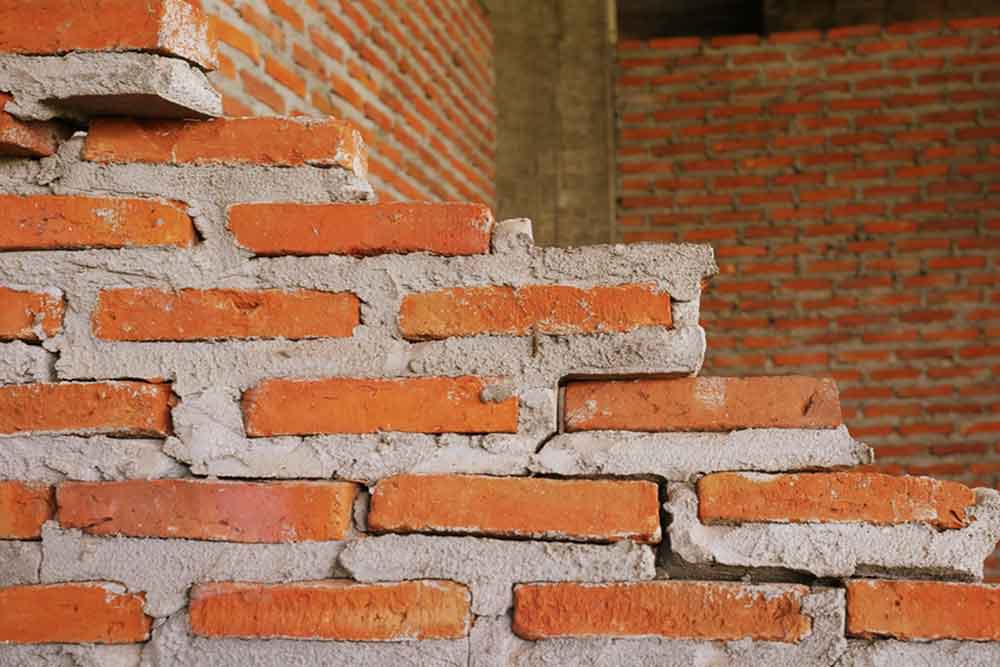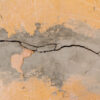One of the primary considerations in building and restoration projects is the choice of material. The debate between stone vs. brick, two popular choices, has been a long-standing one, with both offering unique advantages and challenges. The art of pointing – filling joints with mortar – is essential in the longevity and appearance of masonry work. However, when it comes to stone vs. brick pointing, there are significant differences that need to be understood.
Brick Pointing Is More Labor Intensive
Brick is a versatile and widely used material in construction, revered for its uniform size and aesthetic appeal. Pointing brickwork involves replacing deteriorated mortar in the joints between bricks. Due to the porous nature of brick, the mortar has to be applied with precision to ensure it bonds well. This makes brick pointing a labor-intensive process.
In addition, bricks tend to absorb moisture, which means the mortar used must be specifically designed to manage moisture and prevent damage. Over time, environmental factors and weathering can erode the mortar joints in brickwork, necessitating periodic repointing to maintain structural integrity.
The labor intensity of brick pointing stems from the need to remove old mortar carefully without damaging the bricks. Given their uniform size, any damage to a brick can disrupt the entire aesthetic of the wall. Therefore, masons must proceed cautiously, often using hand tools like chisels and hammers, to ensure accuracy and prevent damage. This attention to detail and careful approach contributes to the labor-intensive nature of brick pointing.
Brick Joints Are Wider Than Stone Joints
The size and shape of the material in masonry work dictate the width of the joints. Typically, brick joints are wider than those in stone masonry. This is largely due to the uniform and rectangular shape of bricks, which allows for wider gaps between them to be filled with mortar. These wider joints offer a distinct aesthetic appeal, creating a patterned appearance that many find appealing.
In contrast, stone is often irregular in shape. The joints between stones are usually narrower because they are fitted closely together, taking advantage of their natural shapes. This close fit means less mortar is required in stone pointing, giving it a more streamlined and ‘natural’ appearance.
The width of the joints also impacts the amount of mortar used, the time taken, and the technique applied in pointing. Wider brick joints require more mortar and might take longer, but they offer a cushion against minor settling or movement. Narrow stone joints, on the other hand, require masons to be extremely precise in their work, ensuring that the mortar fills the space effectively without excess.
Stone and Brick Require Different Mortar
Mortar plays a pivotal role in masonry, acting as a bonding agent that holds materials like stone and brick together. However, not all mortars are the same. The composition of mortar for stone masonry differs from that used for brick due to the distinct properties of each material.
Stone, a naturally occurring material, has varied densities, porosities, and composition. As such, the mortar used for stone pointing must be more flexible to accommodate these differences. The mortar mix for stone often contains lime, which ensures that the mortar remains somewhat pliable and prevents the stone from cracking due to rigid mortar.
Brick, on the other hand, is manufactured and has a more consistent structure. Mortar for brick often contains more cement, providing the necessary strength to bond with the brick’s porous surface. This mix helps achieve a strong bond, ensuring the stability and longevity of brick constructions.
Selecting the appropriate mortar for either stone or brick is crucial. An incorrect mix can lead to issues like mortar cracking, reduced lifespan of the masonry, and even structural problems. Therefore, understanding the specific needs of stone and brick ensures the right mortar mix, guaranteeing the durability and beauty of the structure.
The Color and Texture of Stone and Brick Are Different
The inherent beauty of masonry lies in the visual appeal of the materials used. Stone and brick, while both revered for their aesthetic qualities, offer different colors and textures, leading to distinct visual outcomes in construction.
Stone, sourced from quarries, possesses a natural and diverse range of colors and textures influenced by the minerals present and the conditions under which it formed. From the smooth, light hues of limestone to the dark, textured appearance of slate, stone offers a spectrum of visual possibilities. Its natural veining, patterns, and irregularities provide a unique, rustic charm that many architects and homeowners cherish.
Brick, being man-made, presents a more uniform look but with a range of colors achieved during the firing process. From classic reds to browns, yellows, and even blues, bricks offer versatility in design. The texture of bricks can also vary, from smooth surfaces to those with a rough or ‘dragged’ finish, adding character to buildings.
The Cap Material Should Match the Pointing Material while Pointing a Chimney
Chimneys, by design, bear the brunt of environmental elements, from harsh sun rays to heavy rain and snow. Thus, maintaining their structural integrity and appearance is crucial. A significant aspect of this maintenance is the pointing process, where the mortar joints are repaired or replaced. Moreover, the chimney cap, which is the topmost part, plays an equally significant role in protecting the chimney’s interior from external elements.
Now, why is it important for the cap material to match the pointing material? For one, consistency in materials ensures an even wear and tear. Different materials can have varied rates of expansion and contraction due to temperature fluctuations. If the chimney cap material differs from the pointing material, this mismatch can lead to cracks or gaps over time, compromising the chimney’s structural integrity.
Aesthetically, a matching cap and pointing material offer a cohesive look, making the chimney appear well-maintained and professionally finished. A mismatched cap can stand out, drawing attention to the top of the chimney in an undesirable way.
The Art and Science of Stone Restoration
Stone restoration is a specialized process that breathes new life into aging or damaged stone structures. Over time, stone can lose its luster due to exposure to elements, pollution, or even general wear and tear. This process involves cleaning, repairing, and sometimes replacing parts of the stone to return it to its original state. By using specific tools and techniques, professionals ensure that the stone not only looks refreshed but also maintains its strength. If you own a property with stone elements, it’s wise to know the benefits of stone restoration. By opting for timely restorative procedures, you can enhance the stone’s lifespan, boost property value, and retain the timeless charm that stone inherently offers. Always trust professionals for this task, as they understand the nuances of treating different types of stones.










